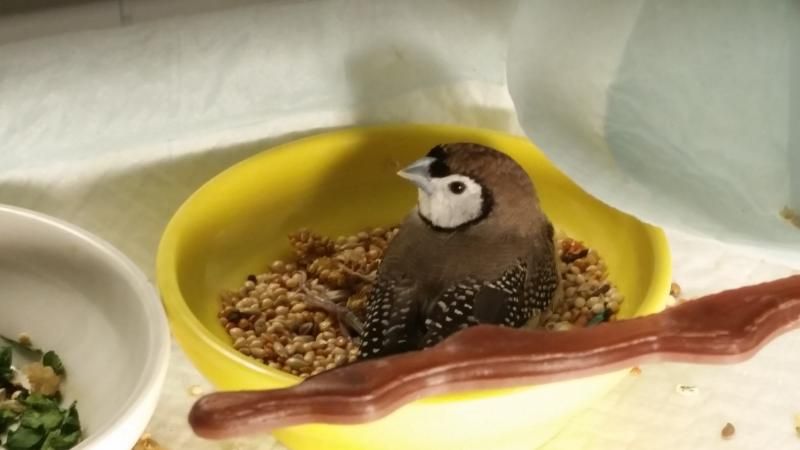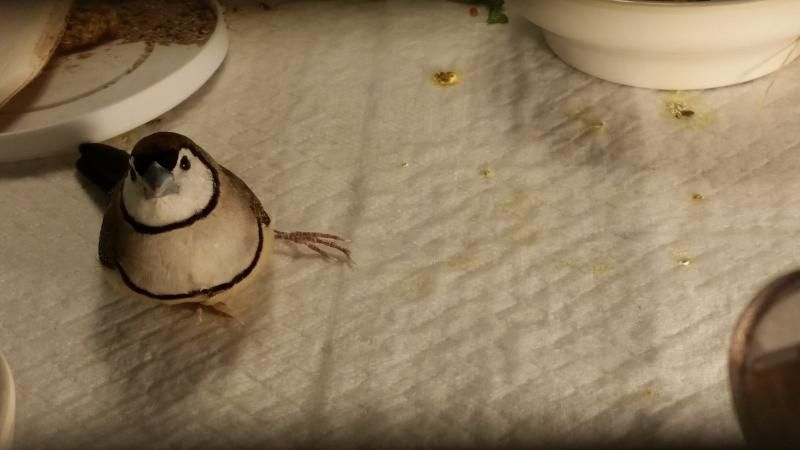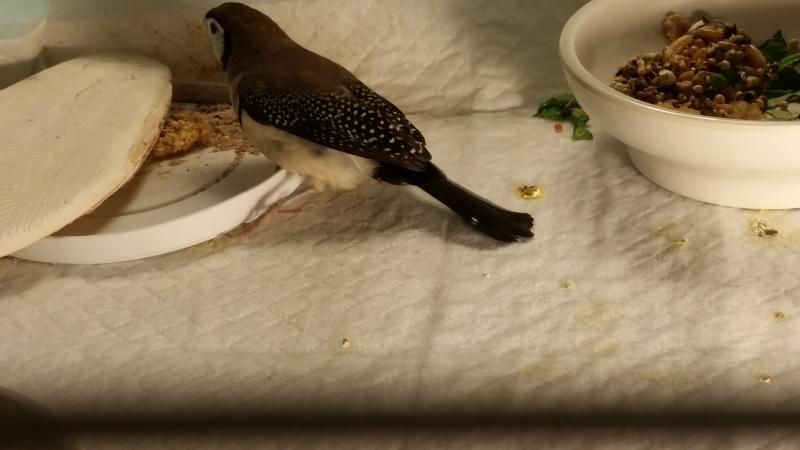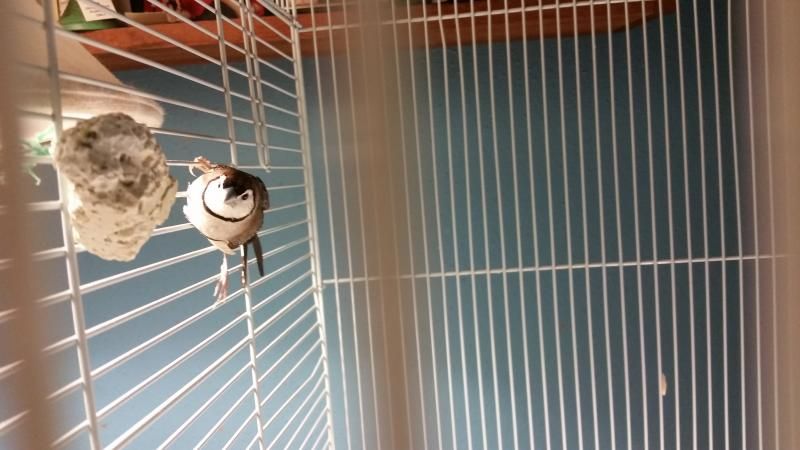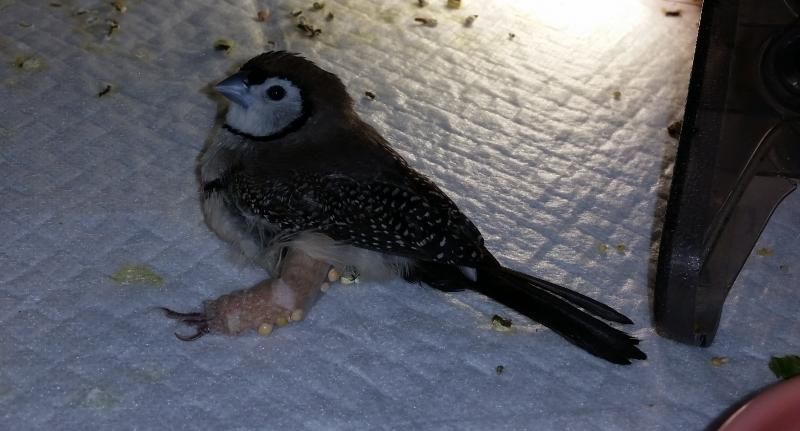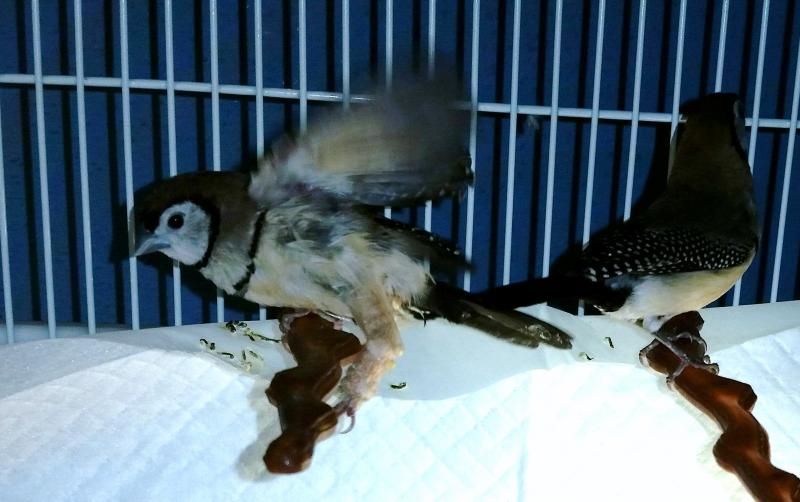KarenB -- So difficult. Sending hugs!
It is tough. I've splinted tiny legs before and it's very stressful for everyone involved. For me because I'm trying to get it done quickly and properly, without causing pain and minimizing fright. For the bird for obvious reasons.
It can be done but it's not easy.
And the fact that they're super skiddish makes it all worse.
Honestly, if you're nervous about it, I would take her to the vet and let them deal with it. And you could watch them do it so you can replicate it. Watching others is how I learned whenever I had to splint a foster (I've never actually had any fractures on my own birds, knock on wood).
I wouldn't leave it unsplinted in the long term, only because it will dangle and that just ruins any bone healing that takes place. And if it continues, it never heals totally. When bone heals, it first forms a soft flexible structure that's tendon-like in consistency, and then, with immobilization, that soft flexible structure calcifies and solidifies into solid bone. But if you don't immobilize, it stays flexible, forming a false joint.
The main danger with that --- especially with a fresh break when you may have sharp bone ends --- is that it could cut into the blood supply, tendons, etc. or cause severe swelling to the point where it causes compartment syndrome. And then you lose the foot.
But hopefully with a hospital cage set-up where she's more or less ground-bound and stays on the cage floor, she should hopefully be able to keep it more or less immobile --- hopefully not much flopping around.
Instinct will incline her to do that, but the skiddishness really sucks since you can't avoid going in to feed at least once a day.
She knows she's vulnerable and so does the mate, so I think that could play a big role in making them skiddish.
If you do try to splint, I can give you some tips (and if you have any questions, feel free to PM). I can see if I can find some pics of splints I've done. I've done a few finches and more than a few parakeets and other small birds like lovebirds, etc. (No, I don't break bird legs for a hobby. LOL Our rescue takes in lots of law enforcement seizures and surrenders, and often, they're injured, neglected, etc. So they go to a foster home - like us - until they heal.)
The trick is to cut the self-adhering bandage/vet wrap into a super thin strip. Too wide and it's really hard to wrap. It needs to be super thin. I'm awful with guessing measurements. But definitely about the width of a cigarette or a bit thinner than your average pen - what's that; maybe a quarter inch? Thinner is better.
The other trick is to hold them so their face is covered and they can't see. It calms them.
Oh and rather than holding them properly, with the head between your pointer and middle finger, I found it was easier to hold them across your palm, with the bird's back against your palm and the head at the side with the thumb.
I always have my husband hold the bird while I do the bandage so you'll have two hands free. His hand was large enough to make a tiny little bird cage (LOL) so we could hold the bird securely but without any risk of squeezing. You just pop the leg out between his fingers.
We'd always use a thin piece of fabric to pick up the bird so they couldn't peek out. As long as they can't see, they're calm and remain motionless.
And if you need to gain confidence making the splint, you can try it on a dummy. You're going to laugh as I sound like a total geek, but to practice my wrapping, I made a dummy little bird leg out of craft wire. Twist 4 pieces together then at the end, each piece turns into a toe. Then you just bend it into the proper shape and stick the leg in a body (I used a lime.)
Then I practiced my wrapping method. It helped me perfect the width of the wrappings and just gain confidence working on such a small scale.
HTH!
 I think the male has been nursing and feeding her. They also had another clutch of eggs they were sitting on, which is why I initially didn't think anything of them being in the nest. Only one of the eggs is fertile, however, and I stuck all the eggs under the societies for now. I put the owls together in the hospital cage, and she slept under the heat lamp last night with Mr. Owl watching over her. Of course, it's the 4th of July today, so I cannot get her to a vet. I tried splinting it, but she is just too tiny to wrap it. I am trying to think of other ways I can splint it, maybe with clay or something. I am just sick for her.
I think the male has been nursing and feeding her. They also had another clutch of eggs they were sitting on, which is why I initially didn't think anything of them being in the nest. Only one of the eggs is fertile, however, and I stuck all the eggs under the societies for now. I put the owls together in the hospital cage, and she slept under the heat lamp last night with Mr. Owl watching over her. Of course, it's the 4th of July today, so I cannot get her to a vet. I tried splinting it, but she is just too tiny to wrap it. I am trying to think of other ways I can splint it, maybe with clay or something. I am just sick for her.